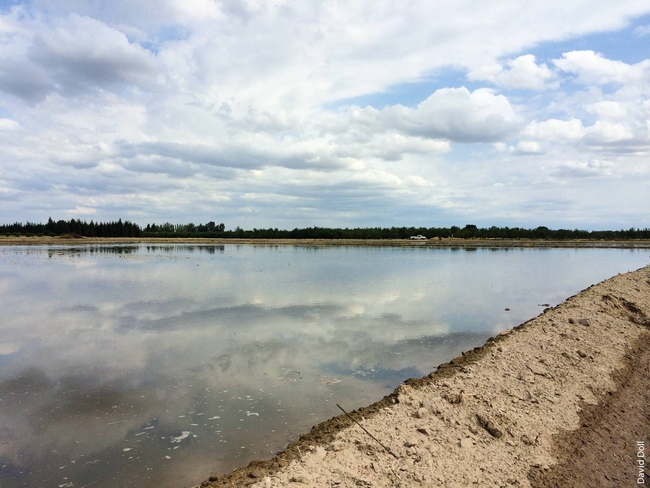
As farmers pump groundwater to keep their crops alive during the California drought, many of the state's aquifers are being drained rapidly. UC Agriculture and Natural Resources (UC ANR) researchers are working on a new approach to replenish these critical underground supplies once the rains return: using farm fields as recharge basins during winter months.
Already, a number of water agencies around the state deliberately recharge groundwater supplies by spreading water on open land and allowing it to percolate into aquifers. But dedicated sites for this type of recharge are scarce. So the UC ANR team decided to figure out if some of the California's millions of acres of farms and ranches could be brought into service.
"We wanted to see if we could support a more sustainable groundwater supply," said Anthony O'Geen, a UC ANR Cooperative Extension specialist (UCCE) in the Department of Land, Air and Water Resources at UC Davis and the lead author of a peer-reviewed article on the topic in the current issue of California Agriculture journal.
Integrating data on the physical properties of soil, salinity, topography and the tolerance of crops to standing water, O'Geen and his colleagues developed an index of the suitability for groundwater recharge of land in all agricultural regions in California. One finding: As much as 3.6 million acres of agricultural land statewide has good potential for groundwater recharge.
In dry years, groundwater can account for more than half of the irrigation water used in the state. But few groundwater basins are actively recharged. Instead, they are replenished naturally -- and at an uncertain rate -- by, for instance, percolation of rainwater into soil and seepage from rivers and lakes as well as water supply canals and irrigation ditches.
Deliberately recharging groundwater allows aquifers to be managed more like surface reservoirs, and has the potential to increase the state's water storage capacity by millions of acre-feet. During periods like the current drought, there's little or no extra water available for groundwater recharge. But in wet years, it may be possible to devote substantial volumes to replenishing aquifers.
Just how much extra water might be recharged, and on what kinds of fields, are two questions the UC ANR researchers are pursuing now.
Helen Dahlke, an assistant professor in the Department of Land, Air and Water Resources at UC Davis and a co-author on O'Geen's paper, has been conducting field experiments to evaluate two main variables: How much water can be recharged over a period of several weeks, and whether all that water hurts the crops planted in the field.
So far, the results are very promising.
Over a six-week period in February, March and April, Dahlke oversaw a test in Siskiyou County in which 140 acre-feet of water were applied to 10 acres of alfalfa. That's well over twice the amount of irrigation water the field typically gets in an entire year.
"It was just pouring into the ground," Dahlke said.
The water percolated readily into the earth and the groundwater table in the vicinity of the farm rose quickly. Just as important: by June the alfalfa field that had been watered so heavily was just as healthy as a control plot. Alfalfa is known to "drown" if watered very heavily in summer months, but it appears that the winter dormancy of alfalfa is helping the crop to tolerate saturated soils for some time. Field trials near the UC Davis campus have corroborated the Siskiyou County results, Dahlke said, though additional tests in more soil types and warmer climates (e.g. the southern Central Valley) are needed.
At least two similar tests in almond orchards in the Central Valley are planned for the coming year, as are additional alfalfa trials.
Groundwater recharge on farm fields is still several big steps away from becoming widespread, O'Geen and Dahlke said. In addition to the physical and biological parameters of the practice, UC ANR researchers are also investigating infrastructure, policy and institutional barriers. The first results from that work should be available later this year, Dahlke said.
To read the groundwater study in California Agriculture, visit http://californiaagriculture.ucanr.edu.
***********
California Agriculture is a peer-reviewed journal of research in agricultural, human and natural resources published by UC ANR. For a free subscription, visit californiaagriculture.ucanr.edu, or write to calag@ucanr.edu.